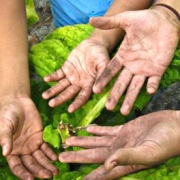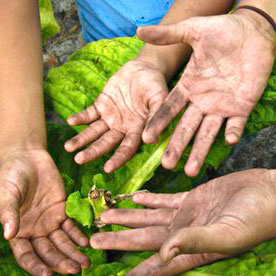Hyatt signs ‘The Code’ – National Consumers League
This article written by Child Labor Coalition contributing writer on human trafficking issues Mary Donovan, was originally published on the Child Labor Coalition website on December 18, 2015.
On December 10, 2015, Hyatt Hotels Corporation re-affirmed its efforts to fight child trafficking by signing a code of conduct known simply as “The Code.” This is a big step forward in the fight against human trafficking and the abuse and exploitation of girls and young women, and in some cases, boys and young men caught in the so-called “sex industry.”
The Code is an industry-driven initiative to prevent the sexual exploitation of children in the tourism industry through awareness, tools, and support. It was developed by End Child Prostitution and Trafficking (EPCAT), the United Nations World Tourism Organization, and UNICEF.
The sexual exploitation of children often takes place in hotels. Hotels are a prime place for this crime because traffickers and pimps can avoid being caught by paying for hotel rooms in cash and switching rooms nightly. Polaris, a global anti-trafficking non-profit, reported that 35 percent of survivors said hotels and motels were the primary places sexual exploitation occurred. These facts make the tourism industry a good place to start to combat the sexual exploitation of children.
When an organization signs The Code, they commit to following six steps. These steps include training employees and providing information for travelers on how to report suspected cases, adding clauses to contracts with a zero tolerance policy of sexual exploitation of children, and reporting annually on the implementation of The Code. The goal is to have a prepared and aware tourism industry that can recognize and prevent crimes against children. Wanting recognition as responsible brands, becoming leaders in the tourism industry, and making the community safer for children were motivations for organizations to sign.
The Code now has 1,287 signatories. Notable ones in addition to Hyatt are: Hilton, Carlson, Choice Hotels International, and Delta Airlines. Signatories come from all around the world, from Bangkok to Jamaica to Bulgaria.
Hyatt Hotels Corporation already has a good record of working against trafficking. In 2012, they worked with Polaris to develop a mandatory human trafficking training program for employees. Their announcement, released on International Human Rights Day, of signing the code deepens their commitment to being a responsible business.
Millions of children are sold into sexual exploitation around the world each year. In order to stop these crimes we must be able to identify when and where they are taking place. Human trafficking is a high-profit and low-risk industry, mainly because of the ability of traffickers to conduct hidden crimes. Initiatives like The Code elevate the risks traffickers face by increasing the chances of detection and making it harder for them to connect with consumers who are fueling the industry of human trafficking. We urge consumers to be a responsible traveler and stay at hotels who have signed “The Code.”

 Donald L. Rasmussen, a physician and dedicated advocate for coal miners’ health reform, died on July 23 due to the complications of a fall in May. His impact on the lives of coal miners was unforgettable and we hope to pay tribute to his life by sharing his accomplishments.
Donald L. Rasmussen, a physician and dedicated advocate for coal miners’ health reform, died on July 23 due to the complications of a fall in May. His impact on the lives of coal miners was unforgettable and we hope to pay tribute to his life by sharing his accomplishments.


 They are far too young to legally purchase cigarettes, yet children as young as 7 are being permitted to work in American tobacco fields and to be exposed to acute nicotine poisoning. Momentum is building to ban child labor from U.S. tobacco fields, as news is spreading of this American disgrace. Learn what is being done about this and how you can get involved.
They are far too young to legally purchase cigarettes, yet children as young as 7 are being permitted to work in American tobacco fields and to be exposed to acute nicotine poisoning. Momentum is building to ban child labor from U.S. tobacco fields, as news is spreading of this American disgrace. Learn what is being done about this and how you can get involved.
















